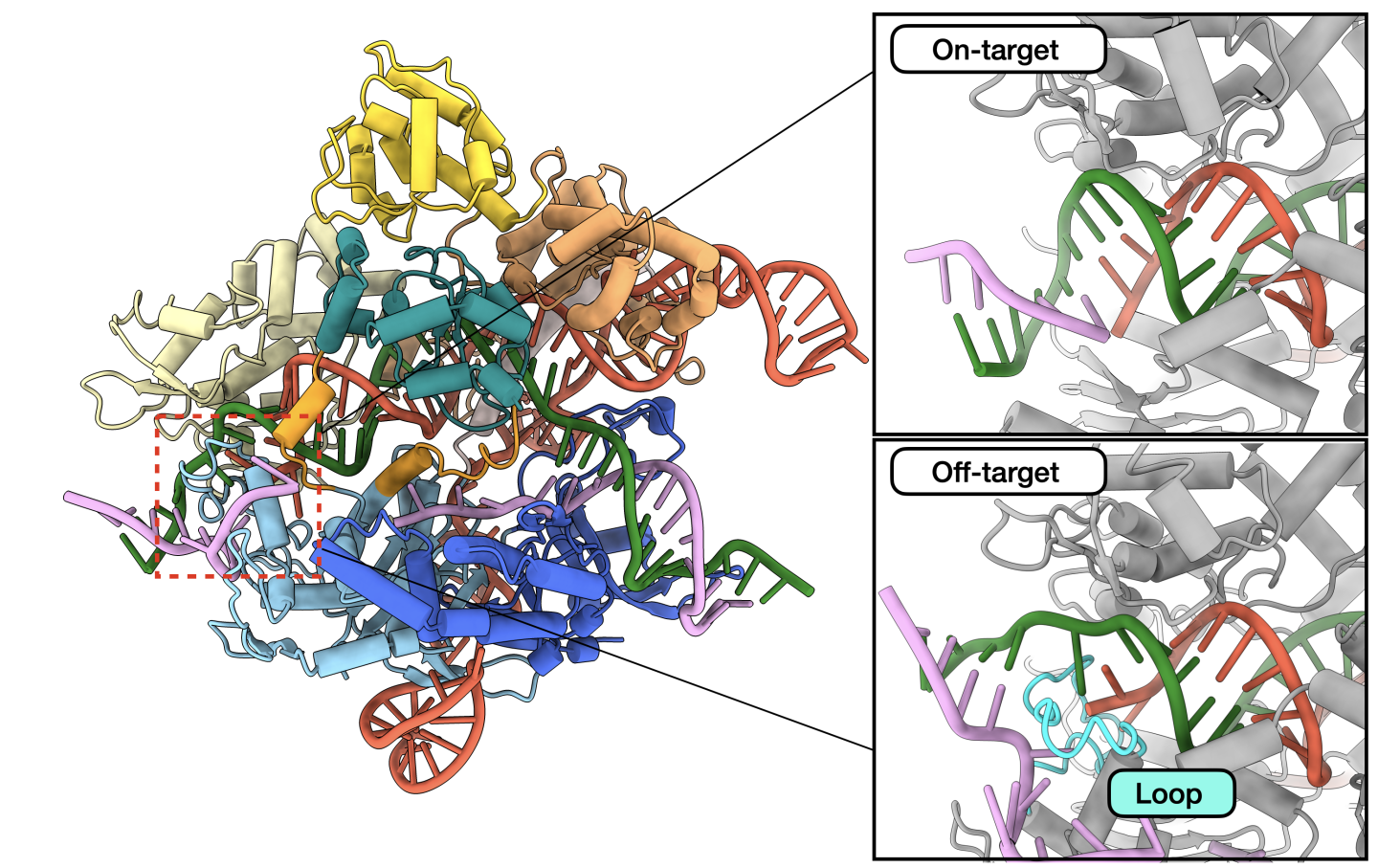
Gene editing for even living DNA and hugely less error prone which was necessary to become useful.
This is another huge advance on top of those we have tracked since the nineties.
Wonderful new medical know how is upon us and once we rid ourselves of the evil now out there, we will have massive progress. The manpower exists..
Protein tweak makes CRISPR gene editing 4,000 times less error-prone
March 03, 2022
A molecular model of CRISPR making an edit to a gene
Jack Bravo/University of Texas at Austin
VIEW 2 IMAGES
https://newatlas.com/science/crispr-gene-editing-error-correction-protein/
The CRISPR gene-editing system is a powerful tool that could revolutionize medicine and other sciences, but unfortunately it has a tendency to make edits to the wrong sections of DNA. Now, researchers at the University of Texas at Austin have identified a previously unknown structure of the protein that drives these mistakes, and tweaked it to reduce the likelihood of off-target mutations by 4,000 times.
CRISPR tools use certain proteins, most often Cas9, to make precise edits to specific DNA sequences in living cells. This can involve cutting out problematic genes, such as those that cause disease, and/or slotting in beneficial ones. The problem is that sometimes the tool can make changes to the wrong parts, potentially triggering a range of other health issues.
And in the new study, the UT researchers discovered how some of these errors can happen. Usually, the Cas9 protein is hunting for a specific sequence of 20 letters in the DNA code, but if it finds one where 18 out of 20 match its target, it might make its edit anyway. To find out why this occurs, the team used cryo-electron microscopy to observe what Cas9 is doing when it interacts with a mismatched sequence.
To their surprise, they discovered a strange finger-like structure that had never been observed before. This finger reached out and stabilized the DNA sequence so the protein could still make its edit.
In this molecular model, CRISPR makes an edit to a DNA sequence (red and green). In an on-target edit (top right), the target sequence will match the guide (pink), but in an off-target edit (bottom right), it will almost match, and a finger structure (cyan) will intervene and stabilize the DNA to make the edit anyway.
Jack Bravo/University of Texas at Austin
Having uncovered this mechanism, the team tweaked this finger so that it no longer stabilized the DNA, instead pushing away from it. That prevents Cas9 from editing that sequence, making the tool 4,000 times less likely to produce off-target mutations. The team calls the new protein SuperFi-Cas9.
Other teams have also created different versions of Cas9 to make it more accurate, but these often slow down the intended edits. The UT researchers say that SuperFi-Cas9 can still make its normal edits at the same speed as usual.
So far, SuperFi-Cas9 has only been tested in DNA in test tubes but the researchers next plan to demonstrate it for gene-editing in living cells.
The research was published in the journal Nature.

No comments:
Post a Comment